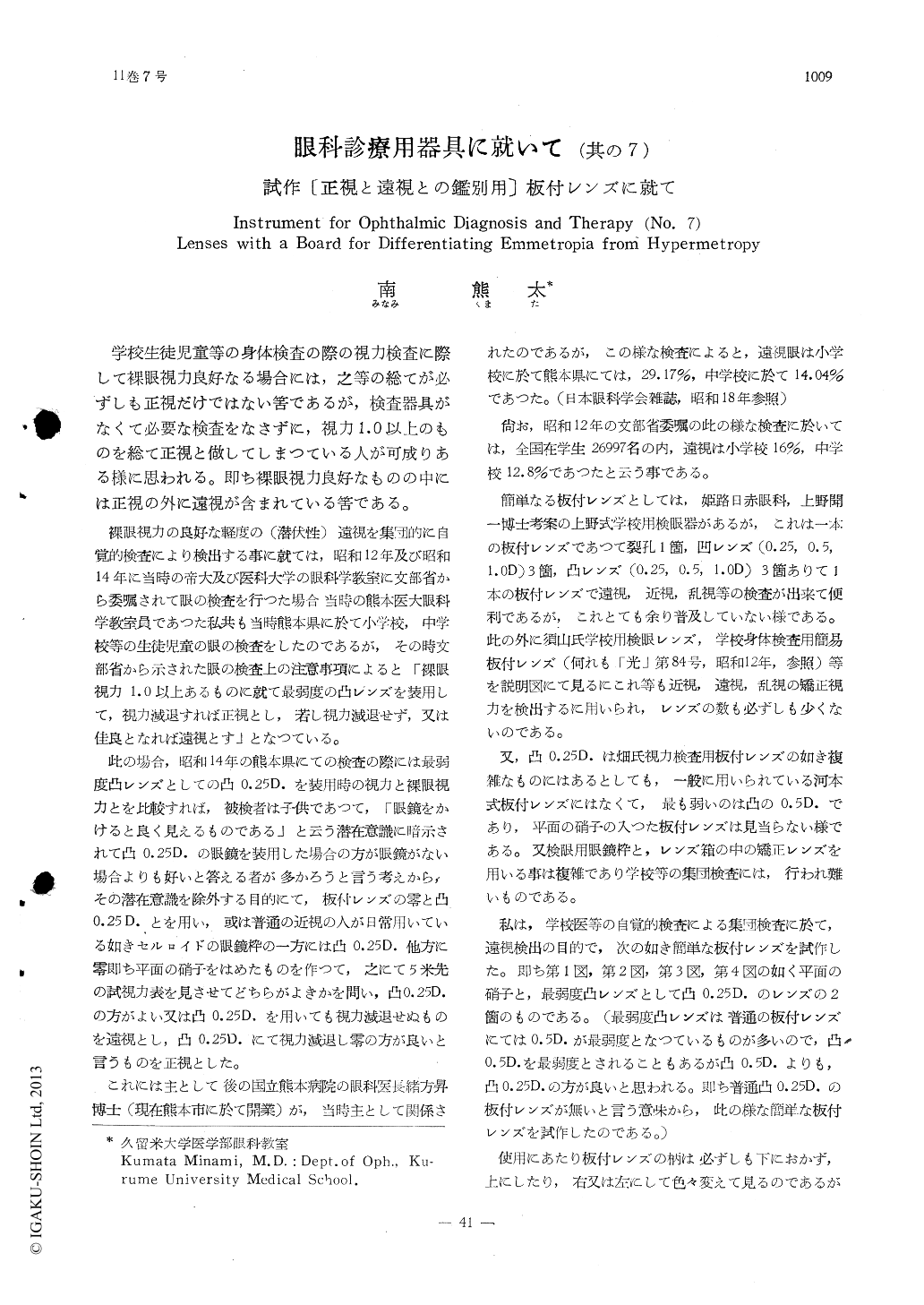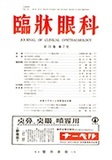Japanese
English
- 有料閲覧
- Abstract 文献概要
- 1ページ目 Look Inside
学校生徒児童等の身体検査の際の視力検査に際して裸眼視力良好なる場合には,之等の総てが必ずしも正視だけではない筈であるが,検査器具がなくて必要な検査をなさずに,視力1.0以上のものを総て正視と徹してしまつている人が可成りある様に思われる。即ち裸眼視力良好なものの中には正視の外に遠視が含まれている筈である。
裸眼視力の良好な軽度の(潜伏性)遠視を集団的に自覚的検査により検出する事に就ては,昭和12年及び昭和14年に当時の帝大及び医科大学の眼科学教室に文部省から委嘱されて眼の検査を行つた場合当時の熊本医大眼科学教室員であつた私共も当時熊本県に於て小学校,中学校等の生徒児童の眼の検査をしたのであるが,その時文部省から示された眼の検査上の注意事項によると「裸眼視力1.0以上あるものに就て最弱度の凸レンズを装用して,視力減退すれば正視とし,若し視力減退せず,又は佳良となれば遠視とす」となつている。
All of school children with good bare sight are not necessarily emmetropia. Some of them are hypermetropy. For the examination to apply convex lens to those with more than bare visual acuity of 1.0 in order to differentiate emmetropia from hypermetropy, the author manufactured two sets of lenses with a board for trial.One of them is equipped with two lenses with glass, plane lens and convex lens of 0.25D., and another is equipped with three lenses with glass, plane lens and convex lenses of 0.25D. and 0.5D.

Copyright © 1957, Igaku-Shoin Ltd. All rights reserved.


